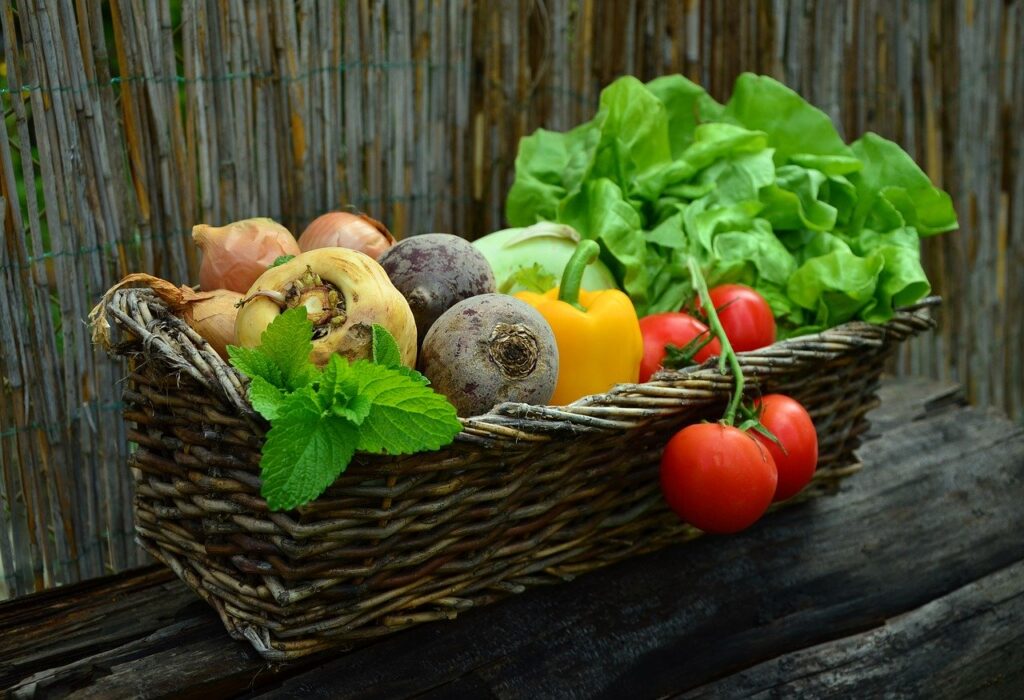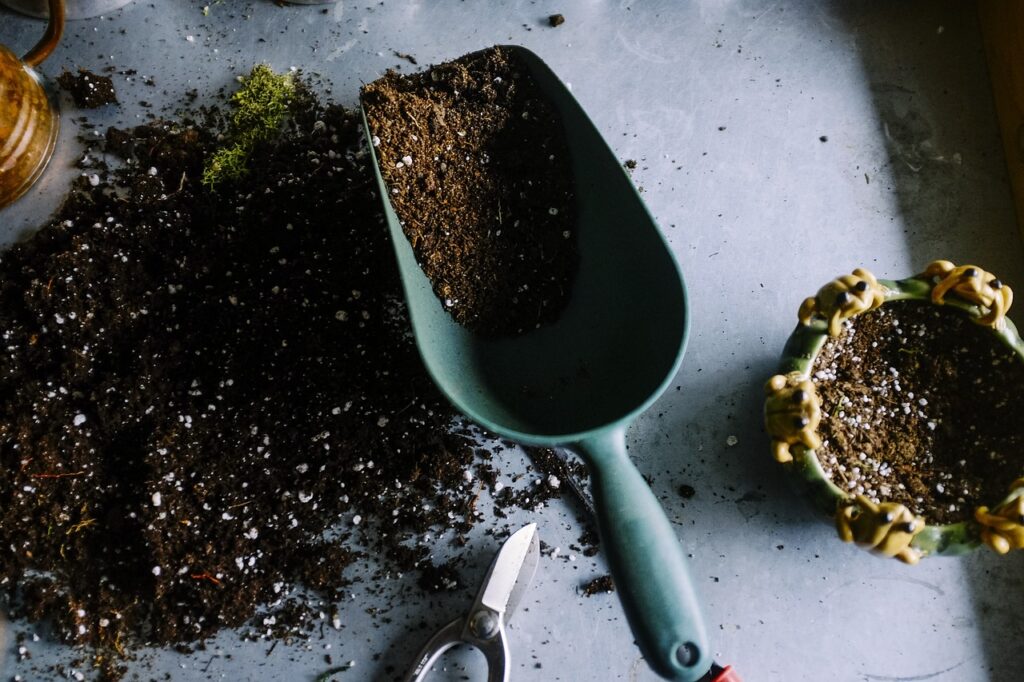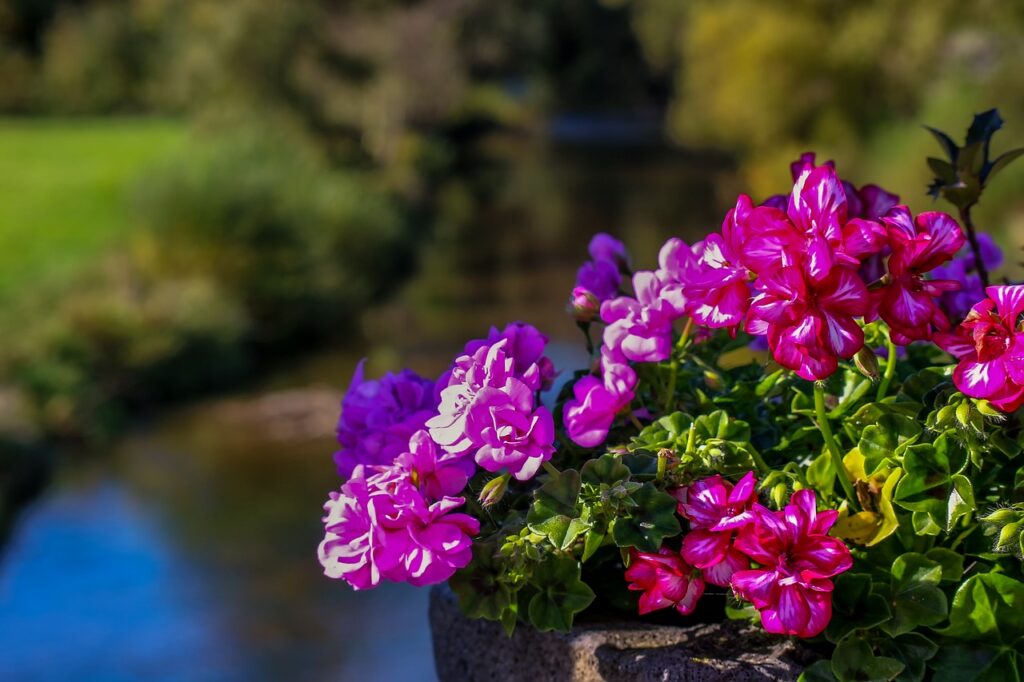It seems like everyone is using raised beds these days, and they’re more popular with gardeners than ever. Experts from all styles of gardening recommend them — from old-school horticulturists to chop and drop sustainability advocates. One place you’ll notice a big difference in opinion, however, is when it comes on which is the best soil for raised beds.
You’ll find big bags of garden soil at your local home center or big box store. And if you’re willing to spend a small fortune, you could definitely blow the budget filling up those raised beds. But depending on the type of raised bed you’re using and what you’re planning to grow, you may want to do a little planning first. Right?
So, what types of raised beds do gardeners use?

Raised Beds Types
A “raised bed” basically means lifting your soil above ground level. It’s one way of prepping your garden for planting. But it’s not until you decide which kind you’re going to use before you even need to work about which is the best soil for raised beds.
Some critical factors to consider before deciding on what type are your budget, your physical endurance, and any time constraints.
Double-dug Raised Garden Bed
The most basic type of raised bed isn’t raised very high at all. A double-dug raised bed only results in a few inches of height above the normal ground level of your garden.
In double-digging, you dig the soil twice over, while loosening the deeper layers with a garden fork. While digging, you can work in extra organic matter, like compost or manure. With enough aeration and organic matter, you’ll increase the volume of soil in the garden bed, raising it slightly.
You want to loosen the soil up to 2 feet deep, so that fast-growing vegetables and fruit plants aren’t hindered by packed earth. Double-digging is hard work, but it will give you lighter and better-aerated soil for your plants. It also helps raise the planting area for better drainage.
This is the form of raised bed I used most often, mainly because it’s so economical. First of all, you don’t need to purchase lumber to surround the bed when it’s only 6 or so inches high. Secondly, if you make your own compost and other soil amendments, you won’t have to purchase the best soil for raised beds. You’ll be making it – right at the site you need it. \
The best part of double-digging is that you only need to do it once. In fact, I recommend that after you’ve initially prepared your garden bed, you go no-till.

Framed Raised Garden Bed
You created framed raised garden beds directly onto the ground with no barrier between the planting area and the ground soil. This allows for complete drainage and offers access to microbes and worms.
More gardening experts are focusing on soil quality these days, which means creating a healthy ecosystem with the right fungi and bacteria for plant health. And the ones that do the best work for you are those found in your own backyard.
Most gardeners build a framed raised bed with wood, cement block, or even sheet steel from 10 to 12 inches or so above ground level.
While this can be expensive, it does offer some protection for your plants. For one thing, they’re less likely to get stomped on by careless children and enthusiastic dogs.
Before building your raised bed, make sure you loosen the ground soil beneath it with that handy garden fork. This helps improve drainage and breaks up the soil to allow plants to really dig in. For extra protection from weeds, you can also line the bottom with many sheets of newspaper or a sheet of cardboard. Don’t worry – the worms love it and it will soon break down and improve your soil.
Once you build your frame, you’ll want to find a good growing medium to fill it with. You can either buy the best soil for raised beds or mix your own. The best type really depends on what you’re planting in it.

Raised Container Bed
While not technically a “raised bed,” a lot of gardeners like to use large containers and planters for their fruit and vegetable plants. And you may see them listed as “raised beds” by the manufacturer.
But note that the real difference between a raised bed and a container is whether it has a bottom that isolates the plants from the native soil.
Some gardeners like to use container raised beds to lift the entire garden off the ground. This makes it easier to tend if you have physical challenges. If you decide to go with a “planter” or any kind of enclosed container, whether off the ground or on, make sure the bottom has been punctured for plenty of drainage.
One caveat, however, with this type of garden planter — you should fill it with the best soil for raised beds that you can afford. Container soil needs to last several seasons, with very few amendments. When they’re isolated in a container and can’t reach the soil below, your plants receive very limited moisture and nutrients. So, make sure that you choose a soil that isn’t too heavy, provides good drainage, and still holds moisture and nutrients.
So, invest in a good mix and then add some compost or slow-release fertilizer at the beginning of each season.
Specialty Raised Beds
If you do a bit more research, you’ll also find a few specialty type raised garden beds you may want to try. Some of them feature explicit instructions for the best type of soil for raised beds using these designs. And in one interesting case, the design is part of what creates the garden soil.
Square-Foot Gardening Raised Beds
Square-foot gardening has been around since the early 1980s and has a lot of advocates. This method uses a simple raised bed laid out in a grid. When you do a little research into this type of bed, you’ll find that it calls for a very specific type of soil mix, and many gardeners say it’s definitely the best soil for raised beds.
Hugelmound
“Hugelkultur” has gained popularity recently as many home gardeners look for ways to work more sustainably. A hugelmound is a unique way of creating optimal conditions for growing a wide range of plants in a small space. Form a big, mounded garden plot, starting with logs and yard debris in a shallow pit. Then add compost and soil.
You’ll get extra room to grow, and the best part is that a hugelmound creates a variety of microclimates. So you can add Meditterenan herbs to the top, where the drainage is best. For plants that like their feet a bit damp, plant around the bottom of the mount.
Depending on how you orient your hugelmount, you can add your sun-lovers on the south-facing side, or give them a little relief in some shade by planting on the north side.
The logs help retain moisture in the soil, and the yard debris will break down slowly, adding nutrients to your raised bed. Don’t be surprised if your hugelmound starts to shrink after a year or two as the organic matter is broken down by happy soil microbes.
Lasagna Raised Bed
Often called the “lazy gardener” method, “Lasagna” raised beds are great for no-till, no-weeding maintenance. It’s also called sheet mulching, and it’s simple and effective if you have the materials.
Start your lasagna raised bed directly on the ground by adding a thick layer of cardboard. Then, add layers of yard waste, fallen leaves, scraps from the kitchen, and compost. Lasagna fans say to layer it up to a foot high.
Lasagna gardening is said to turn even desiccated, exhausted soil into a rich planting area wit the best soil for raised beds.
The Best Soil for Double-Dug Raised Garden Beds
If you decide to go with the double-dug raised bed, you may want to have your soil tested first at your local county extension office. It can help you identify if you need to make specific amendments to your soil, such as lime or pine mulch.
Your local extension office can offer an in-depth test to see if you need to add particular macronutrients to your soil and if it has any deficiencies.
Soil Amendments for Macros
Now that you know what you need to add before getting your garden going, take a look at some excellent organic amendments that you can mix in to improve your harvest.
Nitrogen
Is your soil poor in nitrogen? Add the following:

Phosphorus
Needs more phosphorus? Try:
Potassium
You can add potassium using:
- Fish meal
- Soybean meal
- Glauconite (Green Sand)
- Potash

Organic matter and compost
To improve the structure as well as the nutrient levels, add compost, composted manure, or worm castings to your raised beds. It will also help feed those vital microbes in the soil that work to keep your garden veggies healthy.
The Best Soil for Raised Beds
For larger raised beds or containers, you’ll need to buy or mix garden soil to fill them. As I mentioned before, there’s a lot of disagreement about what makes the best soil. It really comes down to what you’re trying to grow and where and when you’re trying to grow it.
That said, here are some excellent recommendations from gardening gurus worth looking at:
The Old Farmer’s Almanac
You’ll find this homemade soil mix recipe on the Farmer’s Almanac website:
Raised Bed Soil Recipe
- 4 bags (2 cubic feet) topsoil
- 2 bags (3 cubic feet each) peat moss or coconut coir
- 2 bags (2–3 cubic feet each) compost or composted cow manure
- A 2-inch layer of shredded leaves or grass clippings (free of pesticides and herbicides)
Joe Lamp’l
The Joe Gardner podcast says this mix is “perfect.” You’ll find the following mix on his website:
- 50 percent high-quality topsoil (bulk or bags)
- 30 percent compost (homemade or purchased)
- 20 percent mix of organic matter, including any of the following:
- Shredded leaves
- Worm casting
- Mushroom compost
- Aged chipped or ground bark
- Composted Cow or chicken manure

Gardeners.com Mix
Gardeners.com will show you how to build your own raised bed, as well as showing you what to put into it.
- 60 percent topsoil
- 30 percent compost
- 10 percent perlite or vermiculite

The Square Foot Garden Soil
The inventor of Square Foot Gardening, Mel Bartholomew, has a special mix he recommends. It’s called “Mel’s Mix,” and the formula is easy to remember.
Mel’s Mix
- 1 part vermiculite
- 1 part peat moss
- 1 part compost
If you don’t like using peat moss — and many gardeners don’t — you can also use coconut coir.
Which Is Really the Best Soil for Raised Beds?
There’s never a simple answer when it comes to gardening, since there are so many external factors that affect your results. If you’re double-digging, you may not need to buy or mix any soil at all. I never have – although I do garden in containers a lot.
The mix you choose may change depending on what you grow. Do your vegetables need rich, fertile soil? Or do they need a lighter mix with better drainage??
Root vegetables, on the other hand, prefer something easier to spread out in, like Mel’s Mix.
Fast-growing and hungry vegetables like tomatoes, eggplant, and squash prefer a soil that holds moisture and is rich in nutrients. They may do better in the Joe Gardener or the Farmer’s Almanac mixes.
Leafy greens need plenty of nitrogen as soon as they’re planted. So, the best soil for raised beds for growing salad greens would include composted manure. Organic matter might take too long to break down to do them much good. So, the mix from Gardeners.com might be best.
Get Growing
Once you know what plants you’ll be growing, let their needs guide you to the best soil for raised beds. Make sure you understand their optimal conditions, and then choosing will be much simpler.
Light, loose, even sandy soil is great for carrots, rutabagas, turnips, and potatoes. Leafy greens like a soil that’s high in nitrogen. Fruiting vegetables like tomatoes, eggplant, and peppers like lots of nutrients and steady moisture.